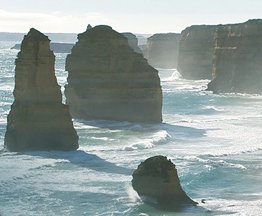Ultimate Guide to Desert Traveling: Explore the Mysteries of Arid Landscapes
### Description:Desert traveling offers an unparalleled adventure, filled with breathtaking landscapes, unique wildlife, and rich cultural experiences that……
### Description:
Desert traveling offers an unparalleled adventure, filled with breathtaking landscapes, unique wildlife, and rich cultural experiences that are hard to find elsewhere. As you venture into the vast expanses of sandy dunes, rocky plateaus, and sun-kissed canyons, you’ll discover the beauty and challenges that come with exploring some of the most arid regions on Earth. This guide aims to equip you with essential tips, insights, and recommendations for an unforgettable desert journey.
#### Understanding Desert Environments
Deserts are often characterized by their extreme temperatures, minimal rainfall, and unique ecosystems. The most famous deserts, such as the Sahara, the Mojave, and the Arabian Desert, boast stunning vistas that can range from rolling sand dunes to rugged mountain ranges. Each desert has its own distinct features, flora, and fauna, making desert traveling a diverse experience.
When planning your desert adventure, it’s crucial to understand the climate and geography of the specific area you intend to visit. Daytime temperatures can soar to scorching highs, while nights can be surprisingly chilly. This temperature fluctuation is essential to consider when packing your gear, as you’ll need both breathable clothing for the heat and layers to keep warm during the cooler nights.
#### Essential Gear for Desert Traveling
When embarking on a desert trip, having the right gear is paramount. Here’s a checklist of essentials:
1. **Hydration Supplies**: Water is your most important resource in the desert. Always carry more than you think you’ll need, and consider investing in a hydration pack for easy access.

2. **Sun Protection**: The sun can be relentless in the desert. A wide-brimmed hat, UV-blocking sunglasses, and high-SPF sunscreen are must-haves to protect your skin and eyes from harmful rays.
3. **Navigation Tools**: Whether you choose to use a GPS device or traditional maps, having reliable navigation tools is essential. Many deserts have vast, unmarked areas, so it’s easy to lose your way.
4. **First Aid Kit**: Accidents can happen, so be prepared with a comprehensive first aid kit that includes items for treating cuts, scrapes, and heat-related illnesses.
5. **Camping Gear**: If you plan on spending nights in the desert, a lightweight tent, sleeping bag, and portable stove will enhance your experience. Make sure your gear is suitable for the conditions you’ll face.
6. **Food Supplies**: Non-perishable food items like energy bars, nuts, and dried fruits are excellent options for easy, high-energy snacks on the go.
#### Cultural Experiences in Desert Traveling

Desert regions are often home to rich cultural histories and vibrant communities. Engaging with local traditions, foods, and customs can greatly enhance your travel experience. Many desert-dwelling cultures have adapted to their environments in fascinating ways, offering travelers a glimpse into their unique lifestyles.
Consider participating in guided tours led by local tribes or communities. These tours can provide insights into traditional practices, such as weaving, cooking, or even storytelling. You might also have the opportunity to sample local dishes, which often feature ingredients that thrive in arid climates, such as dates, grains, and spices.
#### Safety Tips for Desert Traveling
Safety should always be a priority when exploring desert landscapes. Here are some key tips to ensure a safe and enjoyable trip:
- **Travel in Groups**: Whenever possible, travel with a group. This not only enhances safety but also adds to the shared experience.
- **Stay Informed**: Before your trip, research the area you’ll be visiting. Understanding the terrain, weather patterns, and potential hazards will help you prepare adequately.

- **Timing is Key**: Plan your activities during the cooler parts of the day. Early mornings and late afternoons are ideal for exploring, while midday should be reserved for rest and hydration.
- **Emergency Plans**: Always have a plan in case of emergencies. Let someone know your itinerary and expected return time, and carry a fully charged phone or satellite device for communication.
In conclusion, desert traveling is an adventure like no other, offering the chance to explore stunning landscapes and immerse yourself in unique cultures. By preparing adequately and respecting the environment, you can create lasting memories and gain a deeper appreciation for the beauty and resilience of desert ecosystems. So pack your bags, and get ready to embark on a journey through the mesmerizing world of deserts!